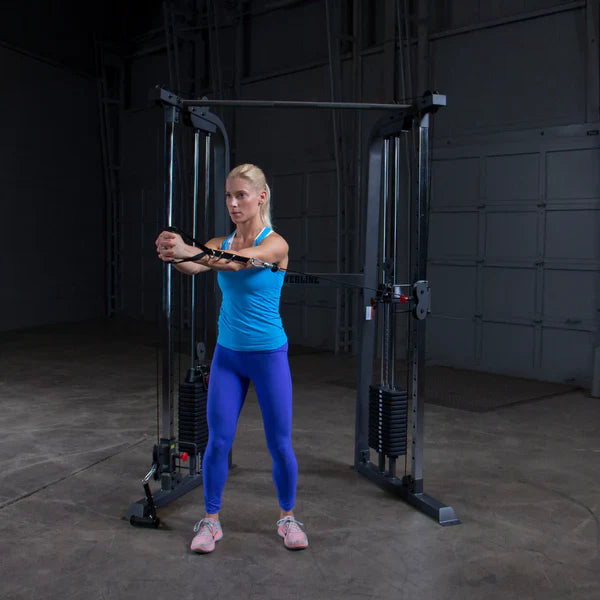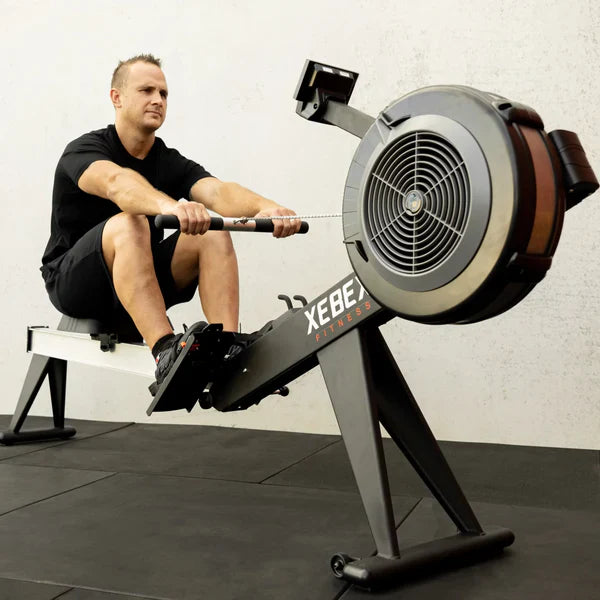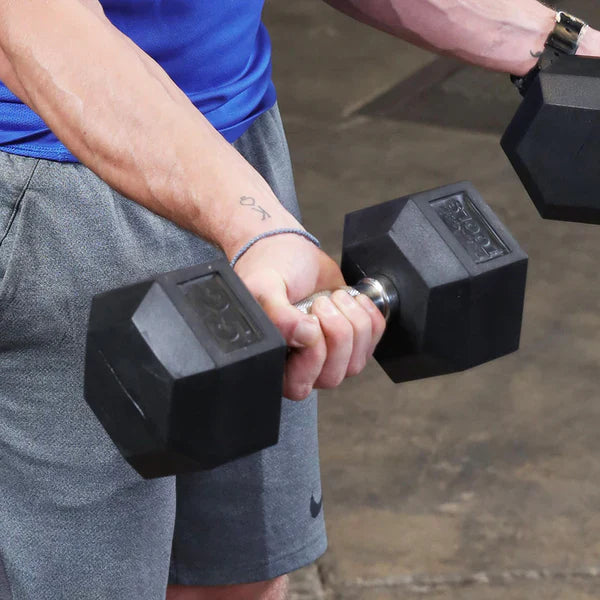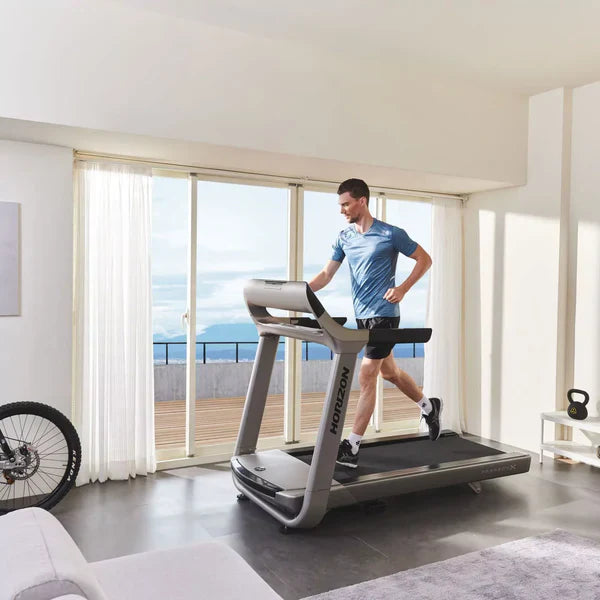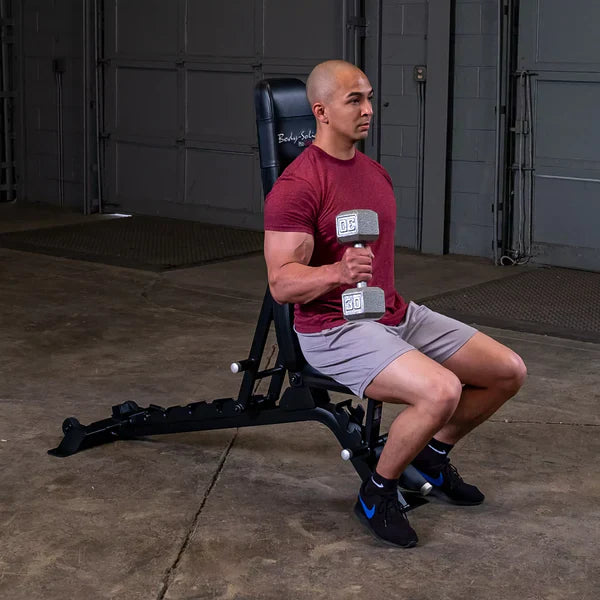If you’re building your dream home gym, you’ve probably researched treadmills, dumbbells, squat racks, and resistance bands. But there’s one versatile, space-saving powerhouse that deserves a spot in your workout space: the functional trainer.
In this article, we’ll explore the functional trainer benefits, why it’s an essential tool for strength and mobility, how to choose the best functional trainer for home gym setups, and even how it pairs with other equipment like a hex trap bar workout routine at home.
What is a Functional Trainer?
A functional trainer is a strength training machine that uses adjustable cables, pulleys, and various attachments to allow you to perform dozens—if not hundreds—of different exercises. Unlike a traditional weight machine with a fixed path of motion, a functional trainer allows freedom of movement, making exercises feel more natural and adaptable.
Most models include:
-
Dual adjustable pulleys for customized resistance height
-
Weight stacks for progressive overload
-
Attachments like handles, ropes, and bars
-
Compact frame to fit into home gym spaces
Think of it as your all-in-one station for strength, mobility, and sports-specific training.
Functional Trainer Benefits for Home Workouts
The functional trainer benefits list is long, but here are the standout reasons this piece of equipment could be your best investment:
1. Versatility for All Fitness Levels
Whether you’re a beginner or a seasoned lifter, you can use the same machine for light rehab movements or intense strength training. You can do everything from bicep curls and chest presses to rotational core exercises and single-leg movements.
2. Full-Body Training
One of the main selling points of a functional trainer is that it works every muscle group. With the right cable height and attachment, you can train your chest, back, arms, legs, and core without switching stations.
3. Low Impact on Joints
Cable resistance is smooth and continuous, which reduces joint stress compared to free weights. This makes functional trainers great for injury prevention and rehabilitation.
4. Space Efficiency
Unlike having a separate station for chest presses, lat pulldowns, and cable rows, one functional trainer can handle them all in one compact footprint.
5. Safe Solo Training
If you work out alone at home, you don’t need a spotter with a functional trainer. You can push to your limit without worrying about getting stuck under a barbell.
Choosing the Best Functional Trainer for Home Gym Setups
When searching for the best functional trainer for home gym use, you’ll want to consider a few key factors:
1. Build Quality
Look for solid steel frames, smooth pulley systems, and commercial-grade cables. A cheap model might wear out quickly, especially if you train frequently.
2. Weight Stack Size
Most home models come with 150–200 lbs per stack, but if you lift heavy, consider upgrading to a model with larger stacks or the ability to add plates.
3. Adjustability
The more pulley height adjustments, the more exercise variety you’ll get. Aim for at least 15–20 height settings.
4. Attachments Included
Handles, tricep ropes, straight bars, and ankle cuffs can save you from buying extras later.
5. Footprint and Ceiling Height
Measure your space carefully—especially your ceiling height—before purchasing. Some taller models require over 7 feet of clearance.
Popular brands for home gym setups include Inspire Fitness, Body-Solid, and REP Fitness, each offering options that balance quality and price.
Functional Trainer Workouts You Can Try at Home
One of the biggest functional trainer benefits is workout variety. Here’s a quick sample full-body functional trainer workout:
Upper Body
-
Cable Chest Press – 3 sets of 12 reps
-
Single-Arm Cable Row – 3 sets of 10 reps per side
-
Cable Lateral Raise – 3 sets of 15 reps
Lower Body
-
Cable Squats – 3 sets of 12 reps
-
Cable Reverse Lunges – 3 sets of 10 reps per leg
Core
-
Cable Woodchoppers – 3 sets of 15 reps per side
-
Pallof Press – 3 sets of 12 reps per side
This type of routine can replace multiple free-weight exercises, especially if you want joint-friendly training without sacrificing intensity.
How a Functional Trainer Pairs with a Hex Trap Bar Workout Routine at Home
While the functional trainer is great for controlled, cable-based movements, pairing it with a hex trap bar workout routine at home can take your training to another level.
A hex trap bar (also known as a trap bar) is a hexagon-shaped barbell that allows you to stand inside the frame while lifting. This position is more ergonomic for deadlifts, shrugs, and carries, reducing strain on the lower back.
Here’s how the two complement each other:
-
Functional Trainer: Builds muscle through controlled resistance, targeting stabilizers and improving mobility.
-
Hex Trap Bar: Develops raw strength and power through compound lifts like deadlifts and farmer’s carries.
Sample Hybrid Routine
-
Trap Bar Deadlift – 4 sets of 6 reps
-
Cable Chest Press – 3 sets of 10 reps
-
Trap Bar Farmer’s Carry – 3 sets of 40 seconds
-
Cable Woodchopper – 3 sets of 12 reps per side
-
Trap Bar Shrugs – 3 sets of 12 reps
This combination covers strength, stability, and conditioning in one efficient workout plan.
Cost vs. Value: Is It Worth It?
Yes, a functional trainer can be more expensive than a set of resistance bands or adjustable dumbbells, but the value it brings in terms of exercise variety, safety, and durability is unmatched.
When you consider:
-
No need for multiple machines
-
Safer solo training
-
Ability to mimic natural movements
-
Long-term durability
…it becomes clear that the investment pays off, especially if you train at home consistently.
Final Thoughts
A functional trainer isn’t just another piece of fitness equipment—it’s a home gym game-changer. With its unmatched versatility, joint-friendly resistance, and compact design, it can replace several bulky machines and help you achieve a complete strength training program without leaving your home.
If you’re deciding on the best functional trainer for home gym setups, focus on build quality, adjustability, and included attachments. Pair it with tools like a hex trap bar workout routine at home, and you’ll have everything you need for a balanced, powerful, and effective home training experience.
Your home gym should work as hard as you do—so make sure it includes equipment that adapts, challenges, and grows with you. The functional trainer fits that role perfectly.

